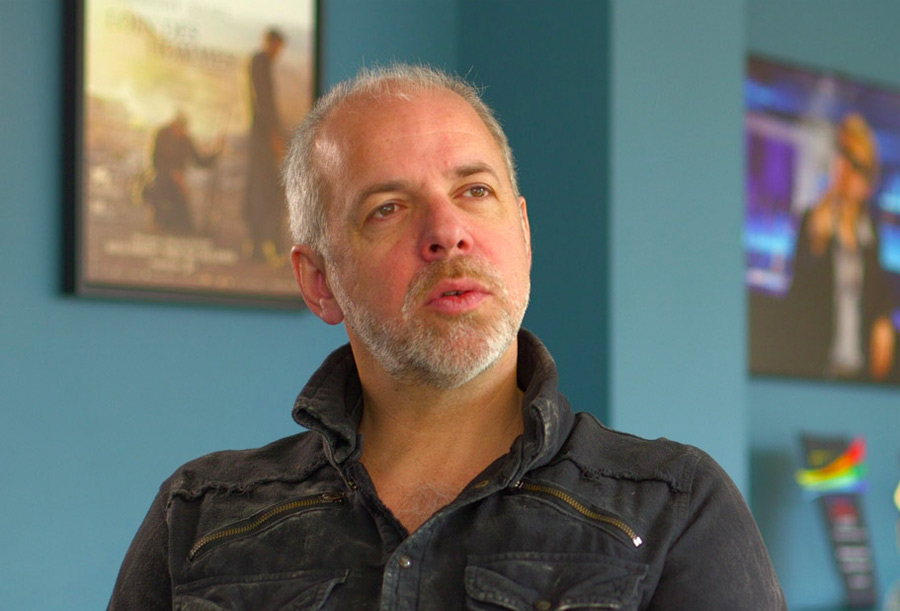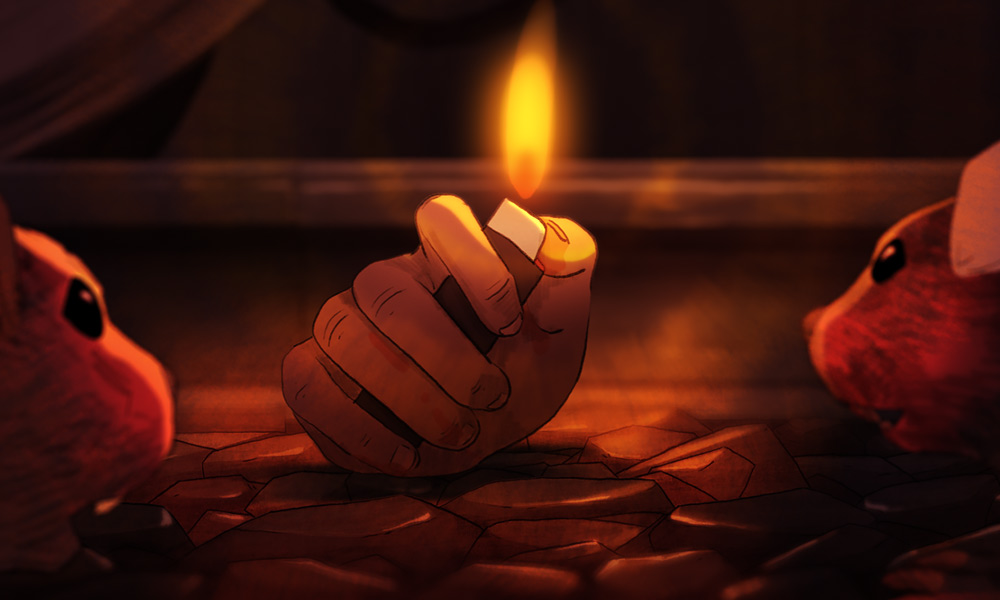***This article originally appeared in the December ‘19 issue of Animation Magazine (No. 295)***
In a cinematic year dominated by superheroes, fantastic creatures, wise-cracking animals and talking toys, it’s a relief to discover a poetic and highly artistic animated movie like director Jérémy Clapin’s I Lost My Body (J’ai perdu mon corps). The brilliantly crafted film, which is based on the novel Happy Hand by French writer Guillaume Laurent (Amelie), won the Cristal for Best Feature and the Audience Award at Annecy and the Critics’ Week Grand Prize at the Cannes Festival earlier this year.
The film’s highly original story centers on a severed hand, which tries to reconnect with its owner, a lonely pizza delivery boy named Naoufel (voiced Dev Patel), who is in love with elusive librarian Gabrielle (Alia Shawkat). Including flashbacks to Naoufel’s childhood, the movie is a natural progression for Clapin, whose artistic shorts Backbone Tale (2004) and Skhizein (2008) received much acclaim at animation festivals.

As Clapin explains during our recent interview, “The pitch wasn’t an easy one to sell, and when our producer Marc du Pontavice contacted me back in 2011, we knew that we had a long journey ahead of us. He had seen my shorts and felt that there was a thematic connection between them and the book. What really intrigued me about the story was that it allowed us to tell a humanistic tale of someone’s life and experiences in a very new and original point of view, which could only be done in animation.”

Du Pontavice, the founder and CEO of French animation studio Xilam and the producer of numerous series such as Oggy and the Cockroaches, Mr. Magoo and Paprika and movies such as Go West: A Lucky Luke Adventure, Shuriken School and Gainsburg: A Heroic Life, knew that he wanted a director with a special sensibility to helm this project.
“I was very attracted to the story and bought the book rights, because I felt that only animation could really tell this story in the right way,” says du Pontavice. “One of the most interesting challenges for us was how to create empathy for a character that has no eyes, no mouth, no face. Thanks to the miracle of animation, we are able to really feel for this cut-off hand and be interested in its quest to find its body and reunite the hero with his lost love.”

A Fluid Blend of 2D and CG
After spending about 18 months working on the script, Clapin and Julien Bisaro (Bang Bang!) storyboarded the entire movie. The bulk of the animation was done at Xilam’s studios in Paris and Lyon, using the open-source software Blender, and part of the CG animation was produced at Gao Shan studio on the French isle of Réunion in the Indian Ocean. “It gives the movie a very distinctive look,” says du Pontavice. “I believe it’s the first feature film made entirely with Blender. I can definitely see more people using it in the future.”
The film’s art direction is described as realistic and colorful, quite different from Clapin’s surreal and stylized approach in his shorts. “It’s an interesting mix of 2D and CG techniques,” adds the producer. “We downgraded 3D with 12 images per second to avoid straight photorealism. Blender is a free software that adapts itself to the different needs of the artists.”

Clapin adds, “Using 3D not only helped us create a tangible world, but also gave the animation a realistic look so we could avoid the trap of a classic 2D style. Employing Blender specifically was essential because of the ‘Grease Pencil’, which is a powerful drawing and 2D animation tool.”
According to Clapin, about 160 people worked on the movie overall. The team first animated the movie in CG, and then used Blender to draw directly on the CG.
The director says it was thrilling to learn how to adapt a book and put his own personal stamp on the story. “François Truffaut once said that a good adaptation is when you betray the book,” he notes. “Writer Guillaume Laurent was heavily involved in the project, and together we were able to reorganize the material so that the hand was involved from the very beginning. I also brought a lot of my own universe into it. In the book, there was no igloo or fly scene. I had to get into the journey of the hand through the senses, not through explanation. The solutions to the narrative had to be more cinematic.”

Invention and Necessity
The film’s unique visuals were a direct result of Clapin’s personal vision for the project. “When you have a relatively small budget and big visual expectations, you have to find a solution that helps you deliver the vision,” says the helmer. “The look is quite realistic, it’s definitely not squash and stretch animation. I wanted to bring the advantages of 2D animation into the world of CG. We wanted a perfect bridge between the two worlds.”
A powerful score by Dan Levy is another of the effective elements which bring the film together. Levy says the first source of inspiration was the layers of the story, the loss of the hand, and the love story between Naoufel and Gabrielle. “When I started to compose the music, the storyboard and the animatic was very abstract, so I had to use my imagination to envision what the final film would be like,” he tells us. “I wanted the soundtrack to glue everything together, and help guide the audience through the layers of the film with ease. I used the flute to represent the childhood, the Arpeggio to represent the mechanism of destiny and strings to represent the love story. I started with these three ideas as a jumping point, and then let go from there! After a few weeks of working with the director, the themes and the musical colors took their place in the movie naturally. We worked in mutual trust; it was fluid and exciting.”

Clapin, who grew up watching Disney classics in France, says he decided he wanted to pursue a life in animation during his high school years. After graduating from the School of Decorative Arts in Paris, he found himself drawn to the world of animated shorts. “The big revelation happened at Annecy, when I discovered a lot of short films, which were all very different both in terms of production techniques and storytelling,” he recalls. “Back then (in the days before the Internet), you could only see shorts at festivals like Annecy. I loved the fact that you could make an animation and even do the storyboards, the sound, the editing, all by yourself.”
When asked about his animation idols, Clapin mentions Japanese master Satoshi Kon (Millennium Actress, Paprika) and American animator Don Hertzfeldt (World of Tomorrow, It’s Such a Beautiful Day). “I think it’s great for animation as an art form to explore adult subjects,” he adds. “It’s nice to be able to create an animated film that delves into our daily lives and illustrates them with poetry and realism. I hope our movie makes audiences look at the journey of this hand from a new point of view. I also hope it will inspire audiences not to give up and try to find better versions of themselves even when life is challenging and difficult.”
Netflix, which co-produced the movie with Xilam, will release I Lost My Body in theaters on Nov. 15 and will stream it beginning Nov. 29.









 Win a Funko X Lilo & Stitch Prize Pack!
Win a Funko X Lilo & Stitch Prize Pack! 


